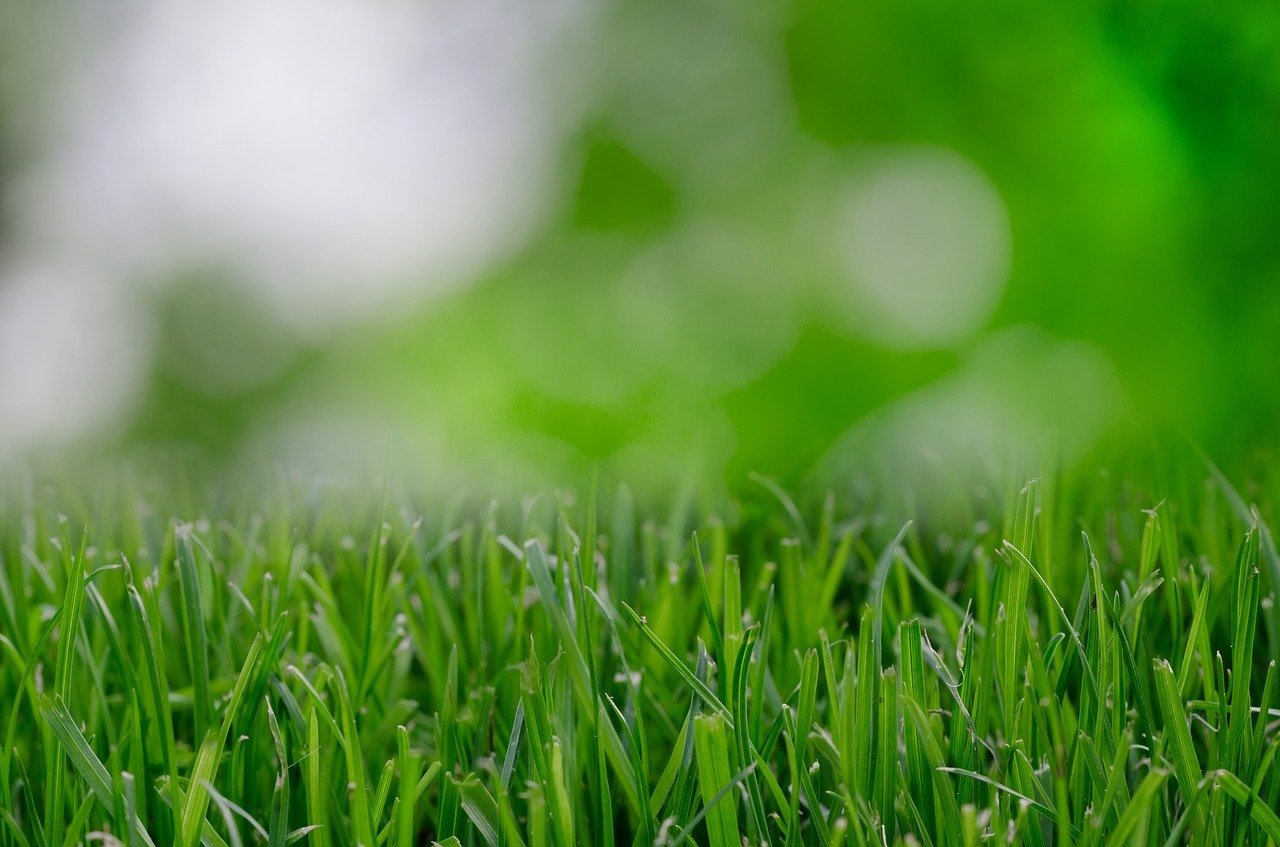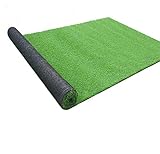There is so much more to artificial grass than just the beautification of your lawn. Learning how to install artificial grass on concrete brings with it a variety of benefits, including the fact that you will no longer have to water your lawn, apply toxic pesticides, nor worry that rain or snow will make your backyard soggy or muddy.
Plus, if you are not hiring a contractor to do it, then it’s a good way to put your DIY skills to the test.
The good thing about artificial grass is that it’s so versatile. You can install it over old concrete, block paving, and even patio paving slabs. This process often doesn’t involve the removal of the old concrete unless you want to. By simply laying the synthetic turf over that old concrete saves you time, energy, and in many cases, money.
Let’s take a closer look at how to install artificial grass on concrete from a DIY perspective.
Table of Contents
Tips on How to Install Artificial Grass on Concrete

The entire process should begin with your assessment of the area on which the artificial turf is going to be installed. Here are some factors that you need to consider:
The stability of the existing concrete: Ideally, the concrete floor on which you intend to install the artificial turf should be in enough decent condition to provide the installation process with a sturdy foundation. You will find it difficult, impossible even, to lay the synthetic grass on concrete surfaces that have very large cracks that are loose or that huge sections have broken off.
It should allow for drainage: You want your concrete to ideally be slightly slanted to allow for water to run off or drain away from your artificial grass as opposed to having it sit there and become a health hazard.
If, however, you find that all you have in uneven concrete that is still reasonably workable, then you need to start by installing a foam underlay. This foam underlay has a few good advantages, including:
- It gives your artificial lawn that soft underfoot that hard concrete just doesn’t have.
- It’s a good way to prevent serious injuries in case of falls.
- It helps to hide the uneven ridges and cracks on the concrete as you overlay the artificial grass. Without doing this, overlaying synthetic grass on uneven concrete surfaces will make the lawn look both uneven and messy.
The foam underlay you use must be of high-quality and sturdy enough to present a good foundation for your artificial turf.
Installation of the Artificial Grass on Concrete
Here are the tools you will need for installing artificial turf on concrete:
- Garden hose
- Knife – make sure the blade is sharp
- Broom
- Striping or filling knife to spread the adhesive
- A jet washer
- A paddle mixer for mixing the adhesive
You will also need some materials, including:
- The artificial turf itself (size depends on the area you want to cover)
- Foam underlay
- Gaffer tape for the foam underlay
- Artificial grass adhesive
- Joining tape (this will be used to join the different pieces of artificial grass when necessary)
Once you have gathered all these tools and materials, you can easily start the installation process (feel free to invite a few friends over and make it a fun weekend experience).
Step-by-step Guide on How to Install Artificial Grass on Concrete
- Make sure the concrete surface on which you intend to install the artificial lawn is clean. Use the garden hose if you have to clean it with water and then wait for it to dry.
- Using some self-leveling compound, fill in the small cracks as well as uneven surfaces. Be sure to get all of them.
- Clean the surface again by removing all debris, existing grass, moss, and weeds.

Install Drainage Holes
- One of the best ways to assess how efficiently your concrete drains off water from the surface is to clean it using a garden hose and the watch the water run-off. If you don’t see any paddling and all of the water drains away, then you are good to go.
- If, however, the water doesn’t drain away, then you can drill holes (16mm) on the spots where the water puddles. You can then fill those holes with 10mm shingles. This will ensure that water won’t remain stagnant on your artificial turf when it rains.
Install the Foam Underlay
- Once the surface is completely dry, it’s time to lay the foam underlay.
- Do it systematically by laying it from one end to the other and cutting as necessary.
- Use masking tape to join the pieces together where necessary.
- Make sure that the foam underlay has covered the entire area on which you want to lay your artificial grass.
- You can then move on to the adhesive process. Add some hardener to the glue and thoroughly mix it.
- Apply the mixed glue to the concrete surface using your filing or striping knife (the glue layer should be about 3mm thick to ensure that it bonds properly with the concrete and underlay foam).
- Just in case the drainage is via the concrete as opposed to drainage holes, then leave some gaps in the adhesive to allow for the water to escape.
Cutting and Gluing the Artificial Grass to Concrete
- The installation of the artificial grass follows the same process as the installation of the foam underlay.
- Should you need to join pieces of the artificial turf together, be sure to trim about 3 stitches off at the edge of each piece that is to be joined to another. This will allow you to ensure that these joints are invisible.
- Glue these joints together before gluing them to the underlying foam. If you glue the separate artificial grass joints to the foam directly, then they will keep moving underfoot as you walk or play on the artificial grass.
- Once you have all your artificial grass pieces glued together and the glue is cured, you can start gluing it to the foam underlay using the same process (apply a thick layer of glue on the entire surface on which the grass is to be glued).
- Give it a few hours for the bond to form properly.
The final step is to use kiln-dried sand or some kind of non-sand infill. Using this on your lawn ensures that:
- The sand weights down the artificial grass and ensures that there are no creases, ripples, or wrinkles on the surface.
- It helps to ensure that the artificial grass fibers remain upright.
- It helps to dissipate heat, thus ensuring your grass doesn’t get too hot.
Once all this is done, your artificial lawn will have been successfully installed on concrete and is ready for use.














